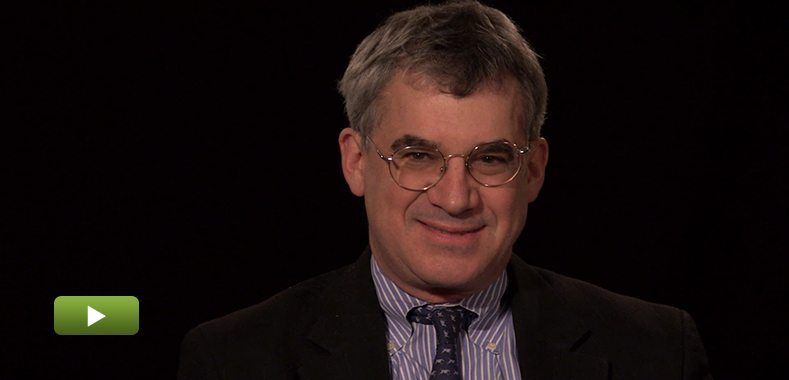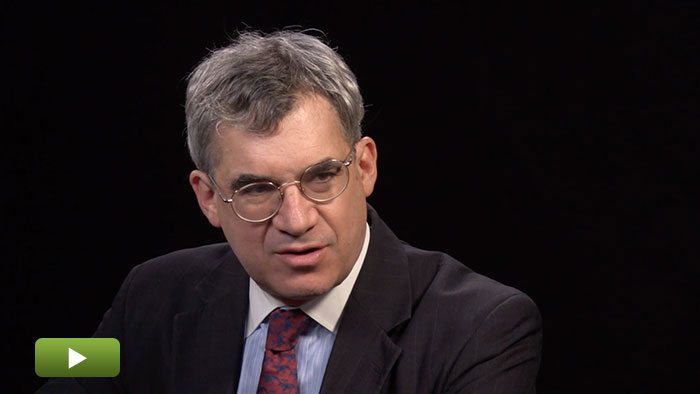Harvard’s Lerner: Is the End of 2&20 Near?
Josh Lerner, a professor at Harvard Business School, outlines the benefits of sharing carry split information with investors, the ‘2 & 20 split’, what’s on LPs’ minds, and the continued divide between PE and VC when it comes to tech investments.
Transcript Download Transcript
Harvard’s Lerner: Is the End of Two and Twenty Near?
With Josh Lerner of Harvard Business School
Q1: You’re the director of the Private Capital Research Institute. How did that platform develop?
Josh Lerner, Harvard Business School:
One of the main pushes, of course, is about the data, creating an academic dataset that users who are at universities and research institutions around the world can use.
Today, we have a little more than half of the 100 largest private equity groups that have agreed to participate in the effort and have, in large part, contributed data. And that data’s been melded together into a dataset, which we have close to a dozen academics from three continents and working on a whole variety of projects from looking at larger buyouts to the most early-stage of investments.
Q2: You recently completed research on the carry split within partnerships. Why should they share that information with investors?
Lerner: It seems there are people who may be founders who may be holding on to a large slice of the organization, but at the same time, very deeply want to create an organization that’s going to outlive them. Certainly, for those people, I think it is important that they think perhaps a bit more about the consequences of the ownership decisions and what it’s going to mean for their desire to create a legacy at the firm.
For limited partners, it’s perhaps more straightforward. Certainly, most limited partners I know aren’t trying to simply pick one good fund to invest in. They’re trying to have a relatively finite number of relationships where they invest in fund after fund after fund. And, certainly, what this suggests is that, in terms of things to weight during the due–diligence process, perhaps there should be even greater weight put on the division of the economics within the organizations, since this seems to have big consequences for the continuity of the organizations going forward.
Q3: What were some highlights of you recent event with ILPA?
Lerner: When you think about major surprises that came out of it, one was the challenges that limited partners are facing. And, certainly, there was considerable conversation around some of the concerns around special deals that some limited partners may be getting and the way that introduced a challenge in terms of trying to ensure alignment across the limited partners in a given fund to step up if, for instance, there were some problematic governance practices or other kinds of issues going on.
We also heard a lot about the challenges of innovation and how a number of groups that seemed to have quite creative ideas ran into a lot of pushback when they went to the market with those; that there were a lot of forces from investment committees to simply the press of daily business that led people allocating funds and pensions and others to just push people to do more of the same rather than come up with serious innovation.
Q4: Are you optimistic that the industry will accept some of the more innovative structures?
Lerner: I’ve been one of these people saying the industry structure is crazy, right, that the two and 20 may have made tremendous sense when we were in an area of $20–million funds. It doesn’t seem to make nearly as much sense when we’re in an area of $20–billion funds. You know, 10-year fund lives are very appropriate for some investments, but for many investments, they are either too short or too long.
I also realized I started saying this around 1995 and that, for most of the two decades, there hasn’t been a lot of change despite my imminent change predictions that changes are imminent. So, being wrong so many times has introduced the degree of question in my clairvoyant efforts.
That being said, I do feel that the combination of the emergence of some extremely large and sophisticated limited partners—on the one hand, the difficulties in terms of the industry with more competition and a shakeout on the other and a whole variety of other changes are leading to an era where these much talked‑about but long-delayed changes are really going to effectuate themselves in the years to come.
Q5: We’re in midst of a strong period for PE. How do you see the cycle today?
Lerner: It’s clearly been a great period for exiting deals. I guess the problem is we’re really more on the coming into transactions, in the sense that certainly prices have been high and competition has been pretty brutal for at least the more plain-vanilla deals. One of the manifestations of this has been groups moving out of their comfort zone and going to minority deals or other, less-traditional kinds of transactions.
My sense is that we are probably going to see a more competitive industry going forward. Certainly, when you look at the rate of return of private equity by decade, it has headed south. I think it’s going to be a more challenging time in terms of putting money to work and generating superior returns. That being said, there certainly seems to be an enormous pressure in terms of money coming into the industry from pension funds who are looking at the kind of promises they’ve made in terms of returns and seeing that it’s very unlikely that public markets are going to generate those things to sovereign wealth funds, who have had a lot of pressures in terms of redemptions and so forth.
Q6: PCRI recently had an event in Silicon Valley. Are you seeing a convergence of PE and VC in technology?
Lerner: It’s fair to say that there is certainly some more crossing of venture capital and private equity than was the case in the past, when the early technology-buyout funds were created—for instance, Silver Lake and the like. There was a sense that this was simply a crazy idea and that technology companies weren’t suitable for buyouts. Clearly, they proved many times over that technology buyouts could and indeed did work.
Clearly, today, when you look at major buyout groups of almost every stripe, they will have a technology practice area. You see a few examples of crossovers—by and large, buyout guys haven’t done terribly well when they’ve played venture capitalists and venture guys’ forays into the buyout land. They have been mixed as well.


